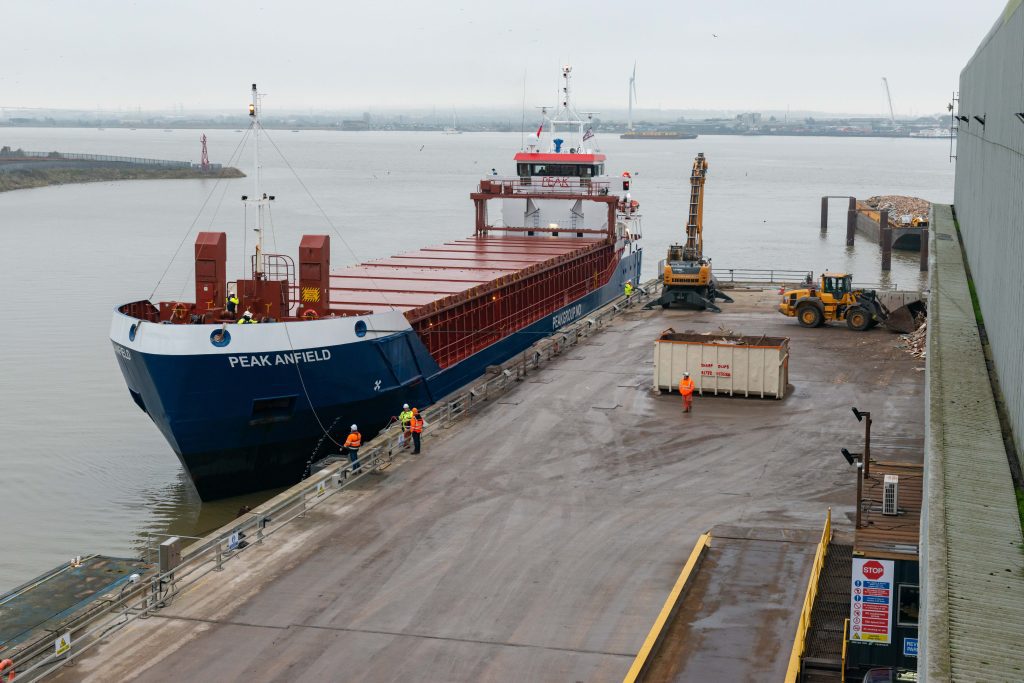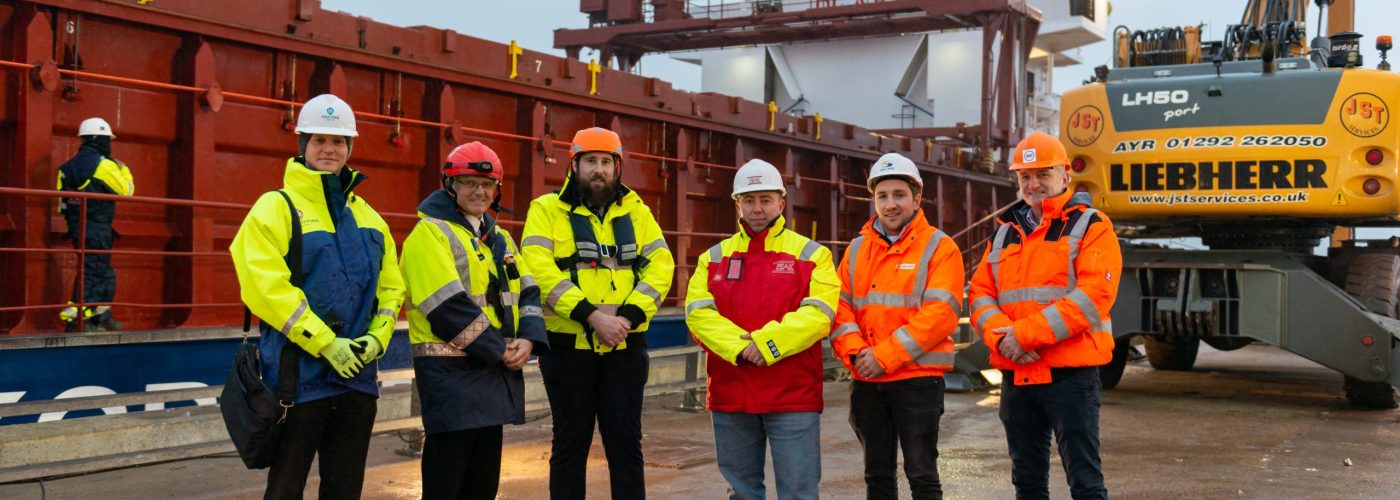Leading wet civil and environmental engineering firm, Land & Water Group, has upgraded Berth 3 at Coldharbour Jetty, on the River Thames, to accommodate coaster vessels, used for short sea shipping, as part of a landmark development for the company.
It is the first time in the Jetty’s history that this type of vessel has been berthed and loaded as part of an ongoing commitment towards supporting cargo deliveries in and out of London. The modifications to the berth were designed by Hewson Consulting and works were undertaken by Land & Water Services. The jetty will be operated by Land & Water Remediation, the environmental services division of Land & Water Group.
Tom Melhuish, Director of Land & Water Remediation, comments, “This is an incredible achievement and one that we are immensely proud of here at Land & Water. The berth upgrade will unlock future supply chains into London whilst harnessing the River Thames as a sustainable transport system.
“Land & Water is passionate about delivering innovative and sustainable logistical solutions that benefit the environment as well as the UK’s infrastructure. I want to thank the Port of London Authority, Hewson Consulting Engineers and M4S Maritime for helping to bring the berth into operation.”
David Allsop, Deputy Harbour Master at the Port of London Authority (PLA), said: “It’s exciting to see the Thames’ potential being utilised to introduce a new export service. This project is another boost for the Thames Vision 2050, which we launched last year, with the aim of maximising the long-term economic, environmental and social potential of the river from Teddington in south west London to the North Sea.”
Coldharbour Jetty is a marine logistics centre for shipping and barging operations, acting as an intermodal transport hub for materials and cargo’s to be imported and exported. It also handles waste spoils from construction works in central London destined for reuse at Land & Water’s Habitat Creation Scheme at Rainham Marshes. The scheme, which Land & Water will be operating until 2040, will see up to eight million tonnes of wet and dry spoil material being used to create an oasis for birds and wildlife whilst encouraging greater areas of greenery along the Thames corridor.

Building, Design & Construction Magazine | The Choice of Industry Professionals





